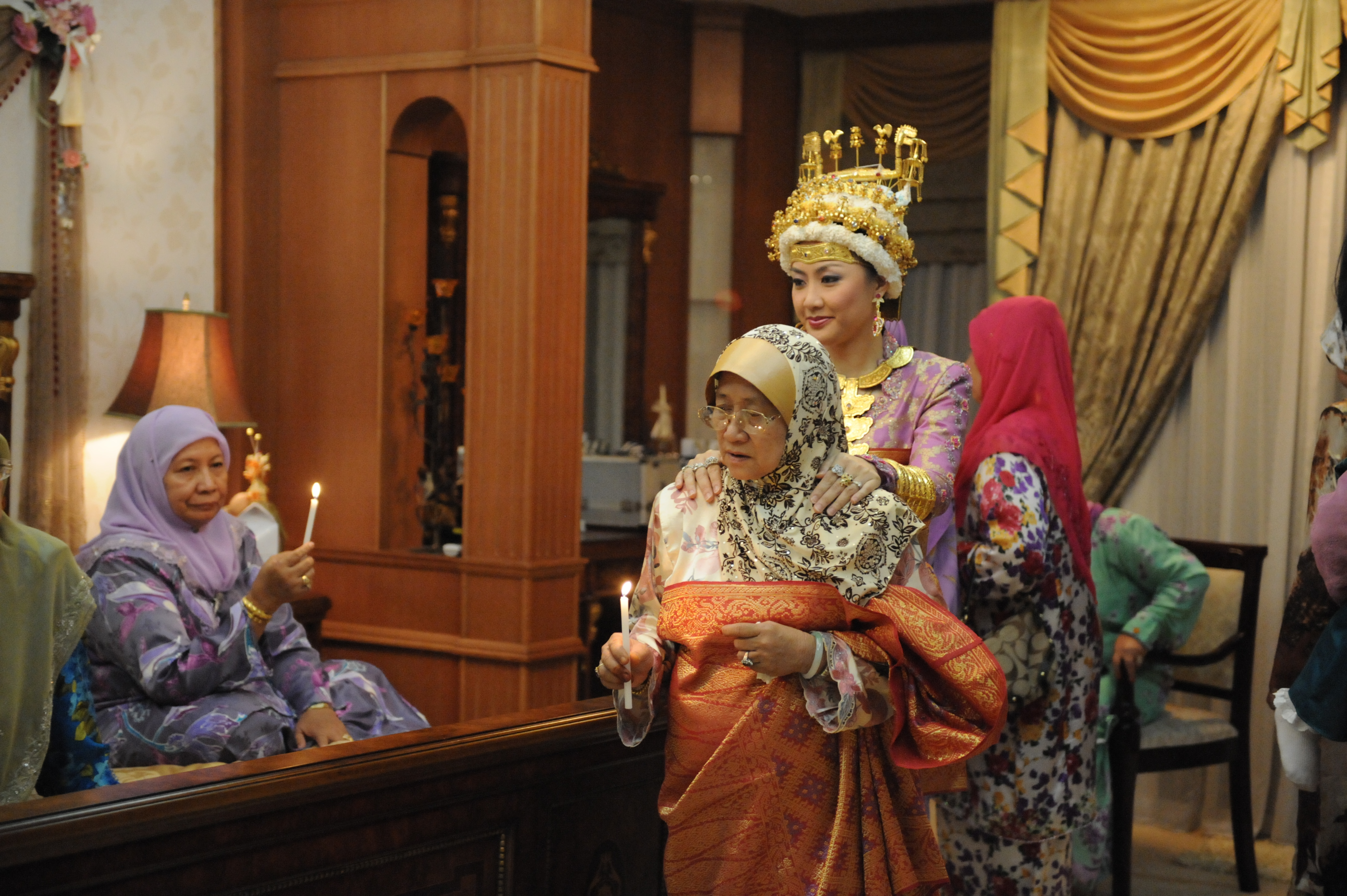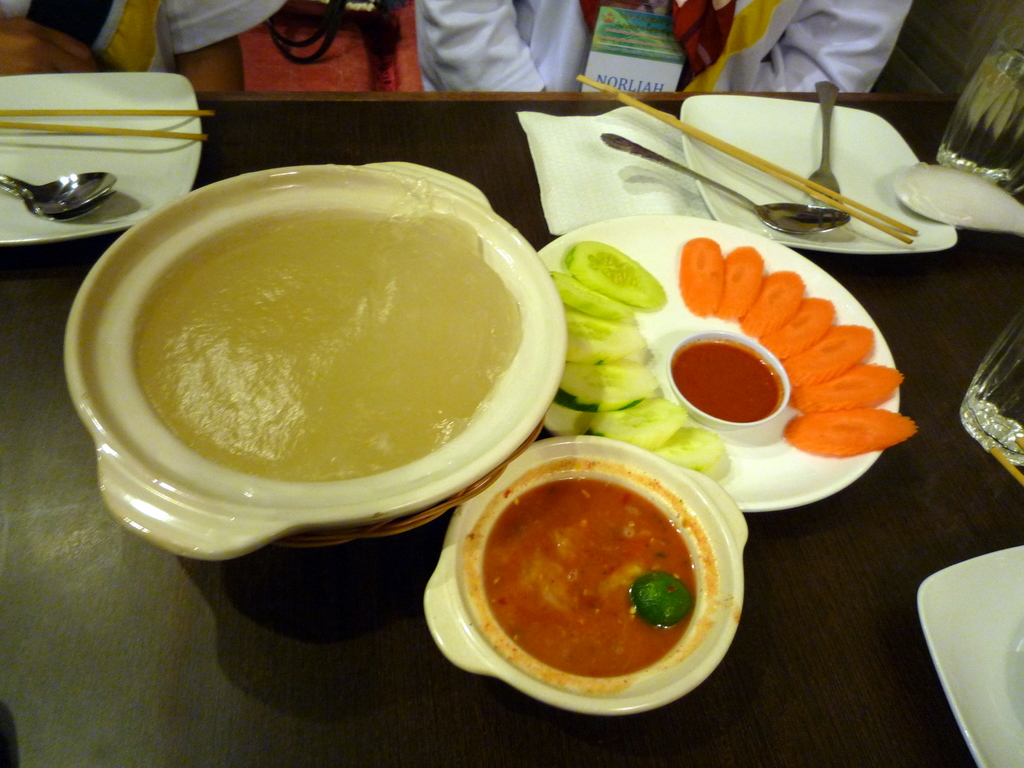|
Punjung
Punjung is a traditional dessert for the Bruneian Malay people and Kedayan in Labuan and in the states of Sabah, Malaysia Malaysia ( ; ) is a country in Southeast Asia. The federation, federal constitutional monarchy consists of States and federal territories of Malaysia, thirteen states and three federal territories, separated by the South China Sea into two r .... References Bruneian cuisine Malaysian cuisine {{dessert-stub ... [...More Info...] [...Related Items...] OR: [Wikipedia] [Google] [Baidu] |
Sabah
Sabah () is a States and federal territories of Malaysia, state of Malaysia located in northern Borneo, in the region of East Malaysia. Sabah borders the Malaysian state of Sarawak to the southwest and the North Kalimantan province of Indonesia to the south. The Federal Territory (Malaysia), Federal Territory of Labuan is an island just off Sabah's west coast. Kota Kinabalu is the state capital city, the economic centre of the state, and the seat of the Government of Sabah, Sabah state government. Other major towns in Sabah include Sandakan and Tawau. The 2020 census recorded a population of 3,418,785 in the state. It has an equatorial climate with tropical rainforests, abundant with animal and plant species. The state has long mountain ranges on the west side which forms part of the Crocker Range National Park. Kinabatangan River, the second longest river in Malaysia runs through Sabah. The highest point of Sabah, Mount Kinabalu is also the highest point of Malaysia. The ear ... [...More Info...] [...Related Items...] OR: [Wikipedia] [Google] [Baidu] |
Bruneian Malay People
Bruneian MalaysBrunei Malay in its various forms can be identified with a nation, an ethnic group and a region. ( ms, Orang Melayu Brunei, Jawi: ) are a native Malay ethnic group that lives in Brunei, the federal territory of Labuan, the southwestern coast of Sabah and the northern parts of Sarawak. The Bruneian Malays are a subgroup of the larger ethnic Malay population found in the other parts of the Malay World, namely Peninsular Malaysia and the central and southern areas of Sarawak including neighbouring lands such as Singapore, Indonesia and Southern Thailand, having visible differences especially in language and culture, even though they are ethnically related to each other and follow the teachings of Islam. All Bruneian Malays who are born or domiciled in East Malaysia even for generations before or after the independence of the states of Sabah and Sarawak from the British Empire through the formation of Malaysia in 1963 are also considered Malaysian Malays in the natio ... [...More Info...] [...Related Items...] OR: [Wikipedia] [Google] [Baidu] |
Malaysia
Malaysia ( ; ) is a country in Southeast Asia. The federation, federal constitutional monarchy consists of States and federal territories of Malaysia, thirteen states and three federal territories, separated by the South China Sea into two regions: Peninsular Malaysia and Borneo's East Malaysia. Peninsular Malaysia shares a land and maritime Malaysia–Thailand border, border with Thailand and Maritime boundary, maritime borders with Singapore, Vietnam, and Indonesia. East Malaysia shares land and maritime borders with Brunei and Indonesia, and a maritime border with the Philippines and Vietnam. Kuala Lumpur is the national capital, the country's largest city, and the seat of the Parliament of Malaysia, legislative branch of the Government of Malaysia, federal government. The nearby Planned community#Planned capitals, planned capital of Putrajaya is the administrative capital, which represents the seat of both the Government of Malaysia#Executive, executive branch (the Cabine ... [...More Info...] [...Related Items...] OR: [Wikipedia] [Google] [Baidu] |
Labuan
Labuan (), officially the Federal Territory of Labuan ( ms, Wilayah Persekutuan Labuan), is a Federal Territory of Malaysia. Its territory includes and six smaller islands, off the coast of the state of Sabah in East Malaysia. Labuan's capital is Victoria and is best known as an offshore financial centre offering international financial and business services via Labuan IBFC since 1990 as well as being an offshore support hub for deepwater oil and gas activities in the region. It is also a tourist destination for people travelling through Sabah, nearby Bruneians and scuba divers. The name Labuan derives from the Malay word ''labuhan'' which means harbour. History For three centuries from the 15th century, the north and west coast of Borneo including the island of Labuan was part of the Sultanate of Brunei. In 1775, Labuan was temporarily occupied by the British East India Company after the failure of the company's station at Balambangan Island. The Sultan of Brunei, Omar ... [...More Info...] [...Related Items...] OR: [Wikipedia] [Google] [Baidu] |
Kedayan
The Kedayan (also known as Kadayan, Kadaian or Kadyan) are an ethnic group residing in Brunei, Federal Territory of Labuan, southwest of Sabah, and north of Sarawak on the island of Borneo. According to the Language and Literature Bureau of Brunei, the Kedayan language (ISO 639-3: kxd) is spoken by about 30,000 people in Brunei, and it has been claimed that there are a further 46,500 speakers in Sabah and 37,000 in Sarawak. In Sabah the Kedayan mainly live in the cities of Sipitang, Beaufort, Kuala Penyu and Papar. In Sarawak the Kedayans mostly reside in Lawas, Limbang, Miri and the Subis area. The Kedayan people are also regarded as a sub-ethnic group of the Klemantan Dayak people. History The origins of the Kedayans are uncertain. Some of them believe their people were originally from Ponorogo, Java, which they left during the reign of Sultan Bolkiah. Because of his fame as a sea captain and voyager, the Sultan was well-known to the people of Java, Sumatra and the Phili ... [...More Info...] [...Related Items...] OR: [Wikipedia] [Google] [Baidu] |
Bajau
The Sama-Bajau include several Austronesian ethnic groups of Maritime Southeast Asia. The name collectively refers to related people who usually call themselves the Sama or Samah (formally A'a Sama, "Sama people"); or are known by the exonym Bajau (, also spelled Badjao, Bajaw, Badjau, Badjaw, Bajo or Bayao). They usually live a seaborne lifestyle and use small wooden sailing vessels such as the ''perahu'' (''layag'' in Meranau), ''djenging'' (''balutu''), '' lepa'', and ''vinta'' (''pilang''). Some Sama-Bajau groups native to Sabah are also known for their traditional horse culture. The Sama-Bajau are the dominant ethnic group of the islands of Tawi-Tawi in the Philippines. They are also found in other islands of the Sulu Archipelago, coastal areas of Mindanao, northern and eastern Borneo, Sulawesi, and throughout the eastern Indonesian islands. In the Philippines, they are grouped with the religiously similar Moro people. Within the last fifty years, many of the Filipino ... [...More Info...] [...Related Items...] OR: [Wikipedia] [Google] [Baidu] |
Dessert
Dessert is a course (food), course that concludes a meal. The course consists of sweet foods, such as confections, and possibly a beverage such as dessert wine and liqueur. In some parts of the world, such as much of Greece and West Africa, and most parts of China, there is no tradition of a dessert course to conclude a meal. The term ''dessert'' can apply to many confectionery, confections, such as biscuits, cakes, cookies, custards, gelatin dessert, gelatins, ice creams, pastry, pastries, pies, puddings, macaroons, tong sui, sweet soups, tarts, and fruit salad. Fruit is also commonly found in dessert courses because of its naturally occurring sweetness. Some cultures sweeten foods that are more commonly umami, savory to create desserts. Etymology The word "dessert" originated from the French word ''desservir,'' meaning "to clear the table". Its first known use in English was in 1600, in a health education manual entitled ''Naturall and artificial Directions for Health'', w ... [...More Info...] [...Related Items...] OR: [Wikipedia] [Google] [Baidu] |
Rice Flour
Rice flour (also rice powder) is a form of flour made from finely milled rice. It is distinct from rice starch, which is usually produced by steeping rice in lye. Rice flour is a common substitute for wheat flour. It is also used as a thickening agent in recipes that are refrigerated or frozen since it inhibits liquid separation. Rice flour may be made from either white rice or brown rice. To make the flour, the husk of rice or paddy is removed and raw rice is obtained, which is then ground to flour. Types and names By rice Rice flour can be made from indica, japonica, and wild rice varieties. Usually, rice flour ( zh, c=米粉, p=mǐfěn, ja, 米粉, komeko, ko, 쌀가루, ssal-garu, vi, bột gạo, th, แป้งข้าวเจ้า, paeng khao chao, lo, ແປ້ງເຂົ້າຈ້າວ, pèng khao chao, km, ម្សៅអង្ករ, msau ângkâ, my, ဆန်မှုန့်, hcan hmun, ms, tepung beras, tr, pirinç) refers to flour made f ... [...More Info...] [...Related Items...] OR: [Wikipedia] [Google] [Baidu] |
Dessert
Dessert is a course (food), course that concludes a meal. The course consists of sweet foods, such as confections, and possibly a beverage such as dessert wine and liqueur. In some parts of the world, such as much of Greece and West Africa, and most parts of China, there is no tradition of a dessert course to conclude a meal. The term ''dessert'' can apply to many confectionery, confections, such as biscuits, cakes, cookies, custards, gelatin dessert, gelatins, ice creams, pastry, pastries, pies, puddings, macaroons, tong sui, sweet soups, tarts, and fruit salad. Fruit is also commonly found in dessert courses because of its naturally occurring sweetness. Some cultures sweeten foods that are more commonly umami, savory to create desserts. Etymology The word "dessert" originated from the French word ''desservir,'' meaning "to clear the table". Its first known use in English was in 1600, in a health education manual entitled ''Naturall and artificial Directions for Health'', w ... [...More Info...] [...Related Items...] OR: [Wikipedia] [Google] [Baidu] |
States And Federal Territories Of Malaysia
The states and federal territories of Malaysia are the principal administrative divisions of Malaysia. Malaysia is a federation of 13 states (''Negeri'') and 3 federal territories (''Wilayah Persekutuan''). States and federal territories Eleven states and two federal territories are located on the Malay Peninsula, collectively called ''Peninsular Malaysia'' (''Semenanjung Malaysia'') or ''West Malaysia''. Two states are on the island of Borneo, and the remaining federal territory consists of islands offshore of Borneo; they are collectively referred to as ''East Malaysia'' or Malaysian Borneo. Out of the 13 states in Malaysia, 9 are monarchies. States Federal Territories Governance The governance of the states is divided between the federal government and the state governments, while the federal territories are directly administered by the federal government. The specific responsibilities of the federal and the state governments are listed in the Ninth Schedule of th ... [...More Info...] [...Related Items...] OR: [Wikipedia] [Google] [Baidu] |
Bruneian Cuisine
Bruneian cuisine concerns the cuisine of Brunei. It is similar to, and heavily influenced by the cuisine of neighbouring Malaysia, Singapore, and Indonesia, with additional influences from India, China, Thailand, and Japan. As is common in the region, fish and rice are staple foods, though beef is expensive and thus less common. Due to the predominance of the Islamic religion, the food is halal and pork is avoided. Alcohol is banned in Brunei. In rural areas, game animals such as wild birds, sambar deer, and barking deer are hunted. Foods and dishes Dishes from Brunei are often spicy, and are commonly eaten with either rice or noodles. Beef rendang, nasi lemak and pajeri nanas are popular foods in Brunei. Among the few dishes peculiar to Brunei is ''ambuyat'', a sticky ball of flavourless sago starch, which is wrapped around a bamboo fork and dipped into a spicy and sour gravy. ''Nasi katok'', which literally means 'knock rice', consists of plain rice, fried chicken and samb ... [...More Info...] [...Related Items...] OR: [Wikipedia] [Google] [Baidu] |


.jpg)



